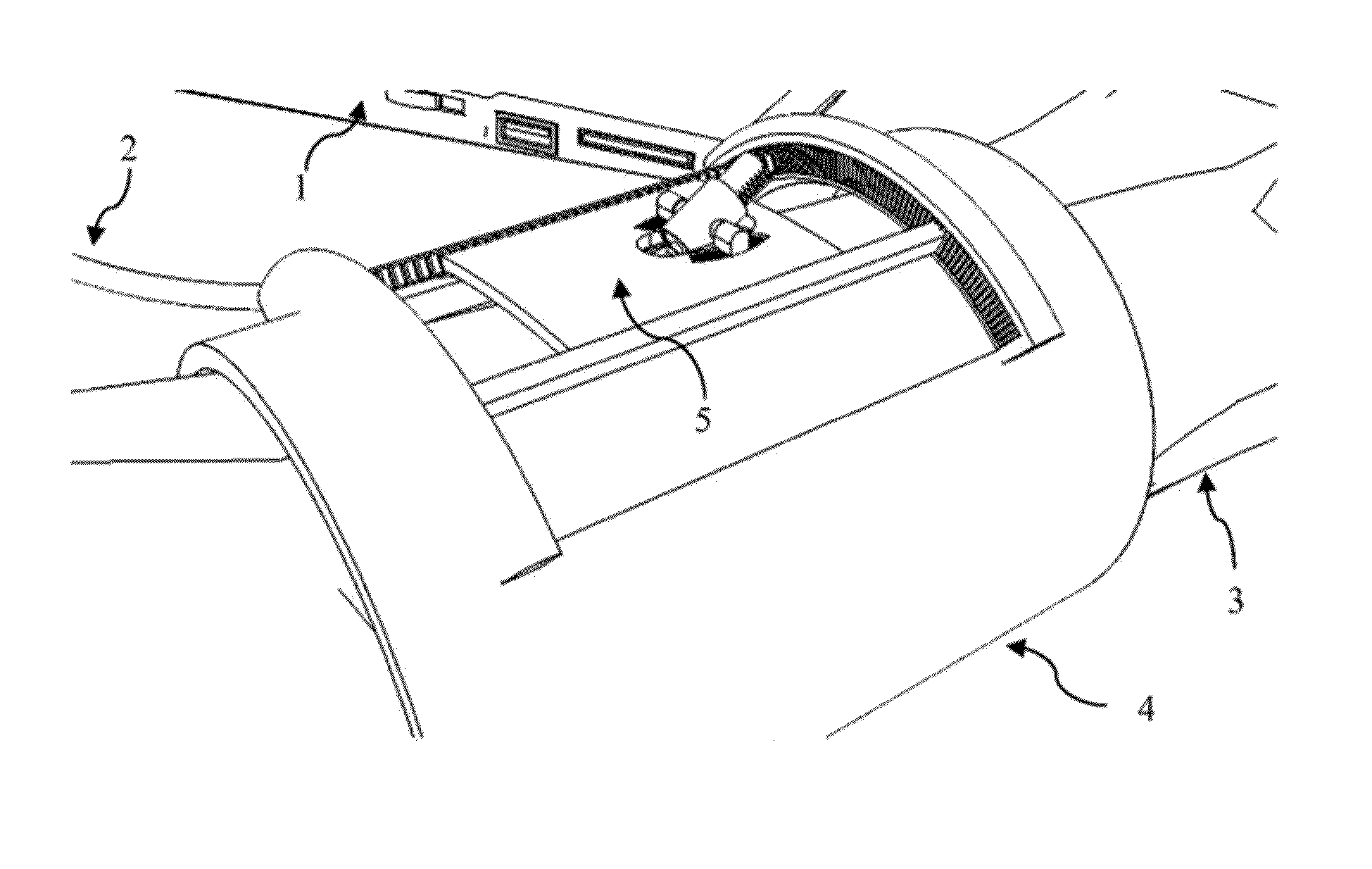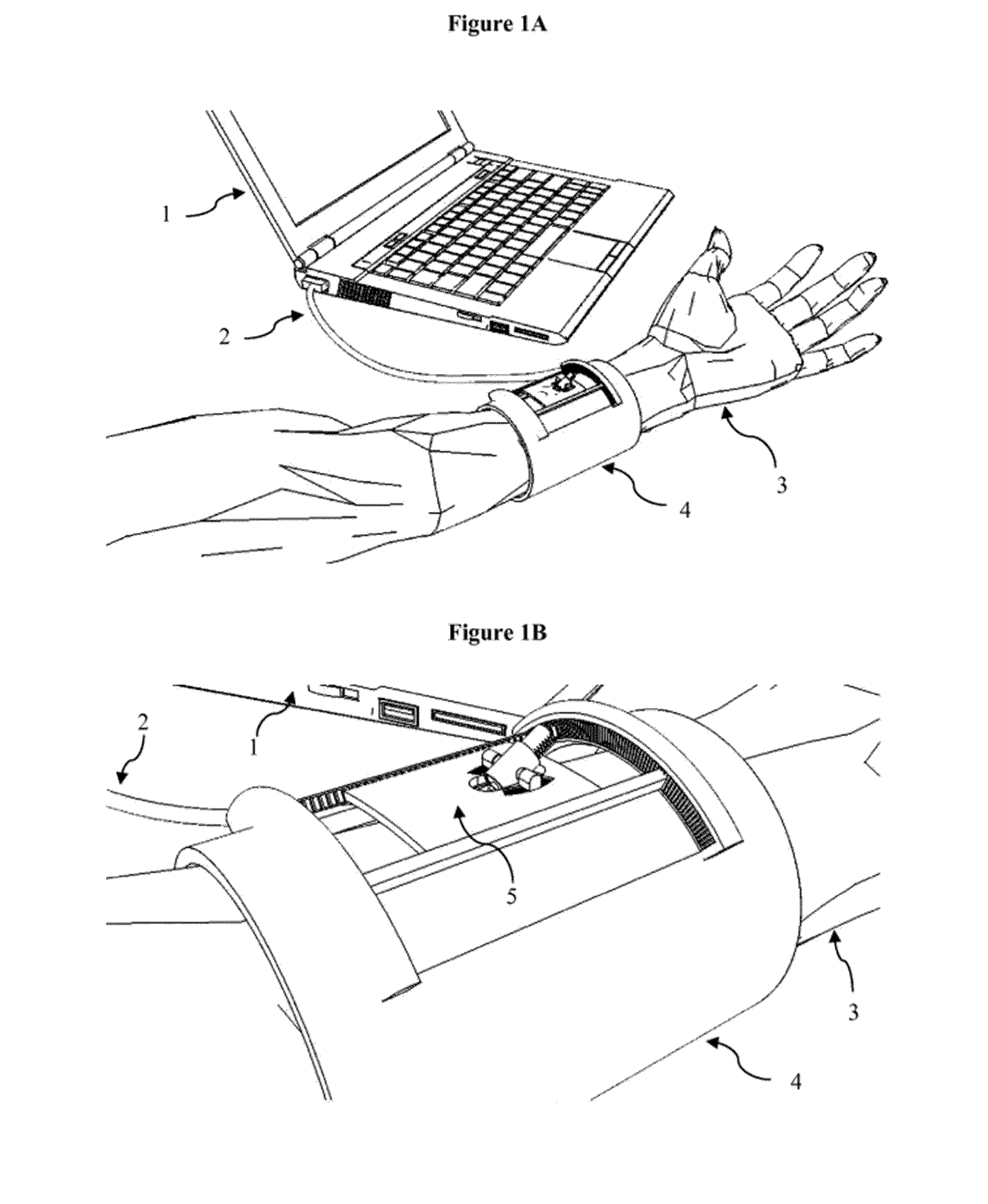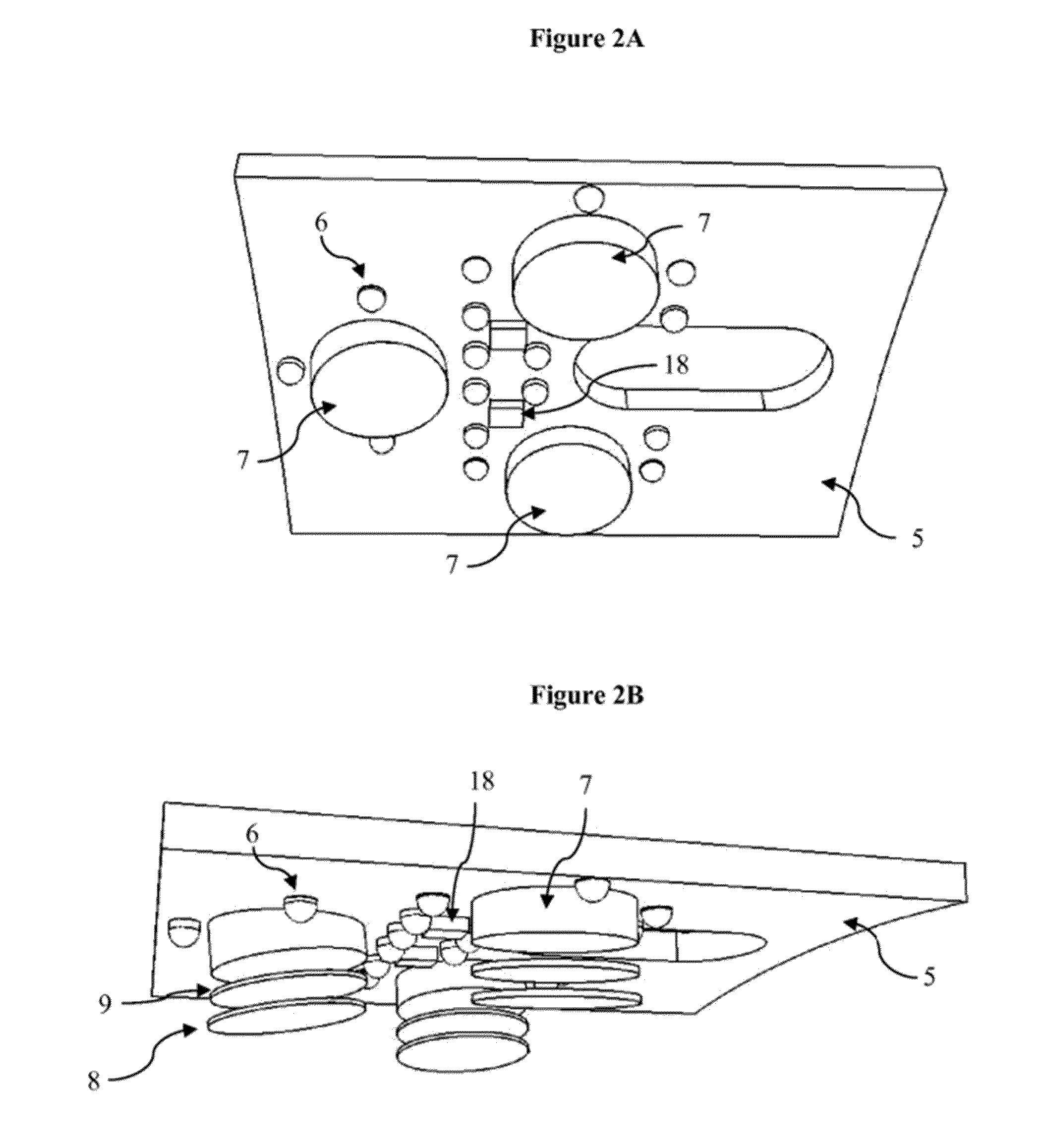Fully automated vascular imaging and access system
- Summary
- Abstract
- Description
- Claims
- Application Information
AI Technical Summary
Benefits of technology
Problems solved by technology
Method used
Image
Examples
Embodiment Construction
[0059]The invention is directed in part to a fully automated system for peripheral vein imaging and access. The system preferably includes an imaging system for providing continuous and real-time imaging of blood vessels, said imaging system comprising at least one of optical, acoustic, photoacoustic, or tactile imaging. The automated system further preferably comprises image processing software for generating a continuous and real-time three-dimensional (3D) computer model of the blood vessels based on the imaging system, and selecting an optimal vessel target based on visual and anatomical information for inserting a needle into the selected vessel target. The system further comprises a robotic effector comprising a needle, a needle attachment unit, and a needle actuation system that positions the needle at the selected vessel target located by the image processing software, and a computer connected to the imaging system and robotic effector, said computer directing, continuously ...
PUM
 Login to View More
Login to View More Abstract
Description
Claims
Application Information
 Login to View More
Login to View More - R&D
- Intellectual Property
- Life Sciences
- Materials
- Tech Scout
- Unparalleled Data Quality
- Higher Quality Content
- 60% Fewer Hallucinations
Browse by: Latest US Patents, China's latest patents, Technical Efficacy Thesaurus, Application Domain, Technology Topic, Popular Technical Reports.
© 2025 PatSnap. All rights reserved.Legal|Privacy policy|Modern Slavery Act Transparency Statement|Sitemap|About US| Contact US: help@patsnap.com



